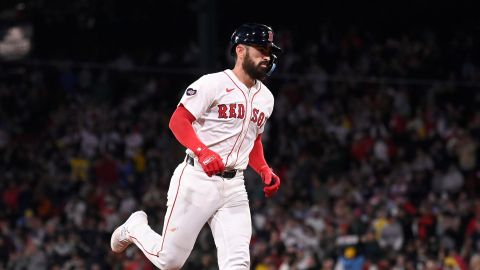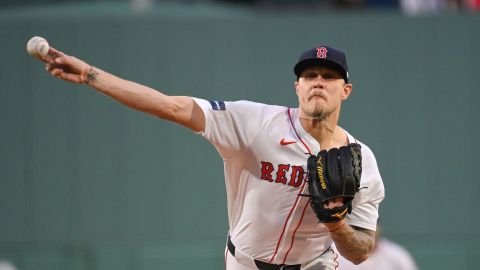Ben Cherington has taken an interesting approach to building the Boston Red Sox’s bullpen.
The Red Sox traded right-hander Anthony Ranaudo to the Texas Rangers on Tuesday in exchange for left-hander Robbie Ross Jr. The move — another indication that Boston wasn’t overly impressed by what it saw from its young starting pitchers down the stretch last season — sets up a rather unique scenario for the club’s relief corps.
Ross, who is the same age as Ranaudo (25), is coming off a disappointing season. Ranaudo, meanwhile, was named the 2014 International League Pitcher of the Year after going 14-4 with a 2.61 ERA in 24 starts with Triple-A Pawtucket.
So what gives?
Well, Ranaudo might have more upside, but the Red Sox have been looking to bolster their bullpen. Ross had success as a reliever in 2012 and 2013 before going off the tracks in 2014 while bouncing between the Rangers’ bullpen and rotation. The Red Sox clearly are banking on continuity breeding a return to form.
The decision to trade Ranaudo rather than other assets stems from the Red Sox’s overall starting pitching depth. Boston leveraged its depth earlier this offseason in trading Rubby De La Rosa and Allen Webster for Wade Miley, but Ranaudo remained a potential trade chip because a new wave of pitching prospects — Henry Owens, Eduardo Rodriguez, Brian Johnson and Matt Barnes — has supplanted the old wave. The wave that included Ranaudo, De La Rosa and Webster failed to assert itself last season despite a golden opportunity in the wake of Boston trading four-fifths of its Opening Day rotation.
Ranaudo, who went 4-3 with a 4.81 ERA in seven major league starts last season, was a dangerous fit for Fenway Park given his problems with the long ball. He surrendered 10 home runs in 39 1/3 innings, giving him the worst home run rate (2.29 homers per nine innings) of any pitcher with at least seven starts. He’s a fly-ball pitcher, which isn’t exactly conducive for Arlington, either.
While the Red Sox, in theory, could have converted Ranaudo into a reliever in the hopes of filling their bullpen need internally, doing so would have been nothing more than a shot in the dark. Ranaudo has been a starter since being drafted in the first round in 2010, whereas Ross has a proven track record out of the ‘pen despite his 2014 woes. (Ross went 10-2 with a 2.62 ERA in 123 relief appearances spanning 127 1/3 innings in 2012 and 2013.)
The Ross acquisition is especially intriguing because of the southpaw’s reverse-splits. He’s actually been more effective against right-handed hitters in his career, meaning the Red Sox’s bullpen now consists of two hurlers who break the traditional left-right mold. Right-hander Anthony Varvaro, who was acquired from the Atlanta Braves in December, also has been more successful against left-handed hitters in the past.
Left-handed hitters own a .770 career OPS against Ross, according to FanGraphs, whereas right-handed hitters own a .712 OPS. Ross’ career ground-ball rate is far greater against righties (61.5 percent) than lefties (40 percent). He was particularly tough on right-handed hitters as a reliever in 2013, holding them to a .211 average, .273 on-base percentage and .250 slugging percentage. Left-handed hitters hit .341 with a .412 on-base percentage and .538 slugging percentage against Ross in 2013.
In other words, the Red Sox’s bullpen, as a whole, could be stronger with Ross in the mix. Just don’t be surprised if you see some unique matchups in 2015.
Thumbnail photo via Tim Heitman/USA TODAY Sports Images




